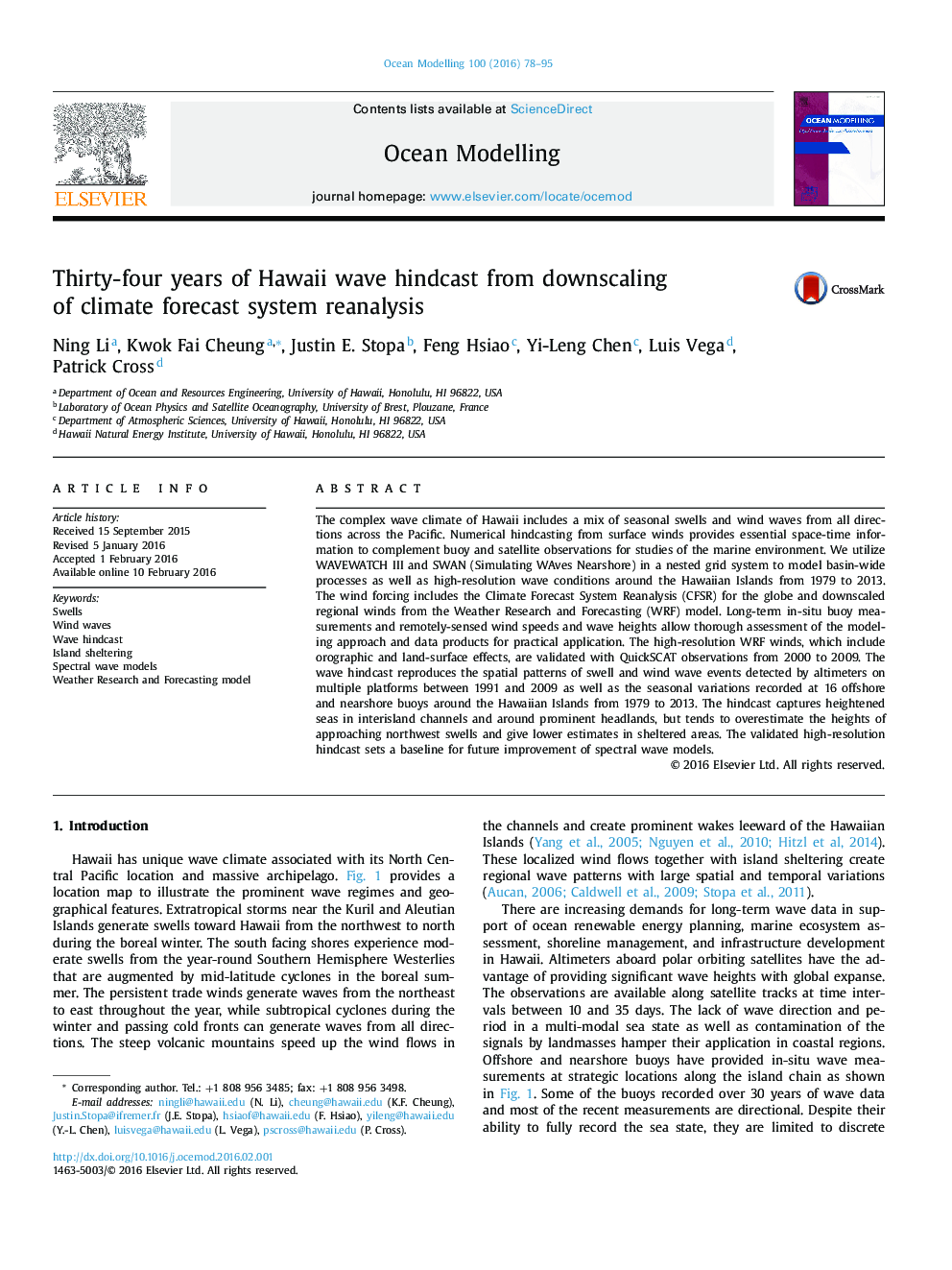| Article ID | Journal | Published Year | Pages | File Type |
|---|---|---|---|---|
| 6388004 | Ocean Modelling | 2016 | 18 Pages |
Abstract
The complex wave climate of Hawaii includes a mix of seasonal swells and wind waves from all directions across the Pacific. Numerical hindcasting from surface winds provides essential space-time information to complement buoy and satellite observations for studies of the marine environment. We utilize WAVEWATCH III and SWAN (Simulating WAves Nearshore) in a nested grid system to model basin-wide processes as well as high-resolution wave conditions around the Hawaiian Islands from 1979 to 2013. The wind forcing includes the Climate Forecast System Reanalysis (CFSR) for the globe and downscaled regional winds from the Weather Research and Forecasting (WRF) model. Long-term in-situ buoy measurements and remotely-sensed wind speeds and wave heights allow thorough assessment of the modeling approach and data products for practical application. The high-resolution WRF winds, which include orographic and land-surface effects, are validated with QuickSCAT observations from 2000 to 2009. The wave hindcast reproduces the spatial patterns of swell and wind wave events detected by altimeters on multiple platforms between 1991 and 2009 as well as the seasonal variations recorded at 16 offshore and nearshore buoys around the Hawaiian Islands from 1979 to 2013. The hindcast captures heightened seas in interisland channels and around prominent headlands, but tends to overestimate the heights of approaching northwest swells and give lower estimates in sheltered areas. The validated high-resolution hindcast sets a baseline for future improvement of spectral wave models.
Related Topics
Physical Sciences and Engineering
Earth and Planetary Sciences
Atmospheric Science
Authors
Ning Li, Kwok Fai Cheung, Justin E. Stopa, Feng Hsiao, Yi-Leng Chen, Luis Vega, Patrick Cross,
